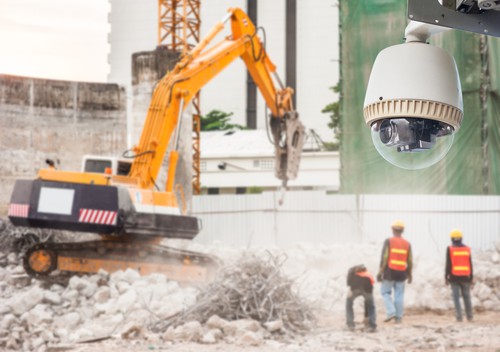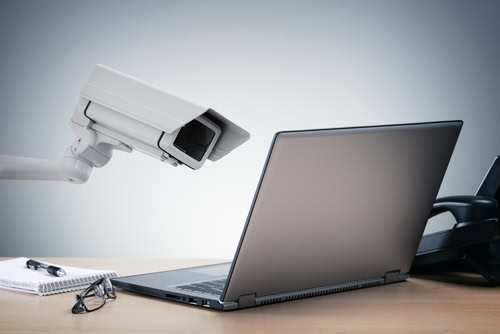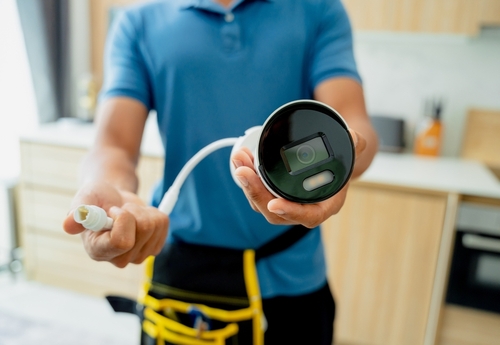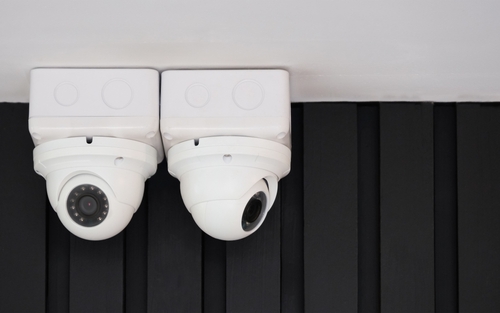
How To Plan CCTV Installation For Schools
September 9, 2019
How To Plan & Install CCTV For Shopping Malls
September 9, 2019CCTV Systems For Construction Sites

Construction sites experiences an array of issues each day when it comes to security and safety such as vandalism, contractor accidents, theft of equipment, machinery, copper, steel, wire and other types of expensive construction materials. This is why you have to develop an appropriate security CCTV strategy for your building sites. It is the only way for these issues to be reduced and in addition, it incredibly increases productivity rate at work, better quality and a much better bottom line.
Advantages of Having CCTV Systems for Construction Sites
*Versatile installation-
most CCTV systems use 3G or 4G for transmission of footage may it be wired or wireless. It just depends on whatever is practical and appropriate for you and your building site and this includes whether you want the set-up for temporary use or a longer term. Power is provided by a generator, solar power, battery, or on-site power while footage is or can be sent to the work foreman or managers but it could also be directly sent to a monitoring station for remote video so that surveillance is done round the clock. This includes a two-way voice communication to give out warnings for the people on site.
*Reduce Crime-
just by making your CCTV Construction Security Cameras visible and properly running on the site, the risk of theft from staff, passers-by or contractors would very likely to reduce . It is also an apparent deterrent to damage and vandalism to the site.
*Boost productivity-
surveillance cameras are able to predict therefore prevent accidents before it happens if your managers and security team is vigilant enough. Footages also assist in obtaining who is involved in the accident, who or what to blame from the situation and reduce down time in the construction site. CCTV is designed to help in achieving Target Zero with regards to accidents. A Building Site CCTV is also used as evidence to resolve disputes between the management and customers and encourage productivity on the site.
The cameras set-up on entrance gates prevents vehicles and people from entering a private site without appropriate permission and supervision.
Elements to Watch Out for On CCTV for Construction Sites
*Weather Conditions-
Rain or storms may cause problems to a CCTV system if it is not protected at the adequate IP level. The cameras have to be water resistant as well as vandal assistant to be able to withstand damages that high winds bring like potential falling debris.
*Theft of Cameras-
The exposed cameras in an open site may become the targets themselves so it should be secured accordingly. A camera’s vision should be overlapping with another one to have an adequate coverage of the area. This is also to ideally capture attempted thefts.
*Camera Damage-
Construction sites typically have cranes, lorries and various other passing materials for construction and it could struck the cameras if it is not placed out of the equipment’s way. Think ahead for possible routes of the machineries and protect it also from heat, cold and dust.
Questions Re: CCTV for Construction Sites
If you plan to do the CCTV installation yourself, you have to consider the questions below for an optimum design to the security of your construction site.
*What is your current security and safety issue?
*What problems are you experiencing right now that can be solved with a CCTV system?
*Have you experienced theft on the site?
*Who did you think is the culprit: the staff, passers-by, kids or the contractors?
*Are there incidents that you wish you could have seen on camera?
*What is your current security system? Are there on-site security staff?
*Do your immediate surroundings require you to have an in-site high level security – such as being next to a deserted derelict building or a large housing estate?
There are lots of factors that entail in the installation of a CCTV system for construction sites and a temporary CCTV system for a building site is an incredible opportunity not just in improving and increasing the workers’ productivity but also reducing accidents, minimizing theft and keeping the construction on track.
Ways in Installing a CCTV System for Construction Sites
First:
Make a diagram. By now you already know the key points of your surveillance needs and on where to put your cameras. It is impractical and expensive to assign one camera for every square inch of the construction site so prioritize the areas that you want to be always watched like the materials/supply corner. Have a copy of the blueprint of your building and note the corners where you want to put the cameras into. As soon as it’s done, check every location and make sure there is no blockage of any sort and whether it could provide the best possible view.
Second:
Buy the appropriate CCTV packages. Make sure the system that you will be getting suits your needs. There are cameras that you can buy by piece but it is generally easier and cheaper if you buy bundled ones. Since you need to monitor a huge area, wireless cameras are the most efficient. Make sure you get wall mounts and camera protectors because a construction site’s environment is harsh.
Third:
Attach camera to the DVR. All surveillance equipment makes its connection using the NBC (Bayonet Neill-Concelman). These cables are friendly and simple to use and they are usually identical on both sides. You just have to plug it into its appropriated port and turn a small nut to its end to lock it in.
Fourth:
Link cameras to the computer. Wireless cameras come with a disc that you will need to install to view feeds. As soon as you install the software, follow the instructions on your screen to access the cameras. Some cameras have small receivers that you have to attach to the computer using a USB cable. If so, make sure it is properly attached. Write down the cameras’ IP addresses i.e. 192.168.0.5, if provided. This number may be typed in any browser to view camera/s remotely.
Fifth:
Call a construction security specialist to set-up a system fitted for your building. A lot of these security companies install not just cameras but motion sensors and an automatic emergency calling just for you but it costs more than a typical DIY installation.



